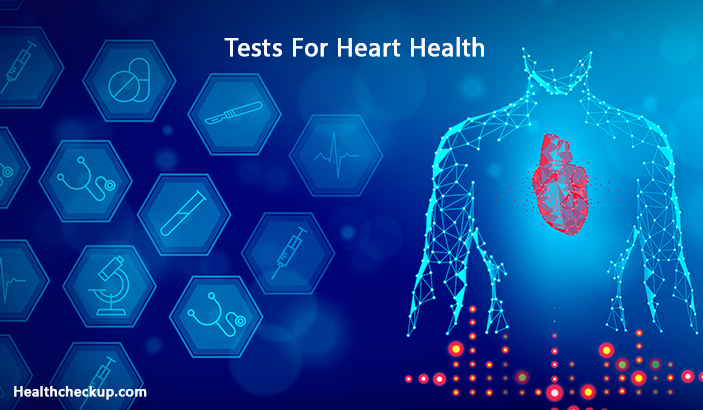We have a lot many heart tests but why do cardiologists suggest these tests for heart health and what’s their purpose? Knowing them will actually help us relieve a lot of worries when we undergo them.
8 Tests For Heart Health Which The Doctors Usually Prescribe
1. Echocardiogram
It’s the most common test for heart health and it is done to check blockage and makes use of sound waves to create images of the heart. This test allows the physician to know how the heartbeats and how blood moves through the heart. Pictorial representations from the echocardiogram help identify different irregularities in heart valves and muscles. This test is done during rest or while exercising to count heart rate.
Why Is It Done?
- Know the reason behind heart murmur
- Know the heart valves’ function
- Know the overall function & health status of the heart
2. Transesophageal Echocardiography (TEE)
It also makes use of sound waves (ultrasound) but the sound waves are of high-frequency. These sound waves make clear images of the heart and arteries beginning from it and leading to it. An echo transducer that makes sound waves is linked to a thin tube that is passed through the mouth until it touches the esophagus.
Why Is It Done?
- Know the function of heart valves
- Trace heart valve disease
- Trace blood clots in the heart
3. Electrocardiogram (ECG or EKG)
This cardiac stress test measures heartbeat’s electrical activity to get 2 types of information. First, by calculating time gaps on the ECG, a physician will note the time taken by an electrical wave to pass through the heart. Calculating the time taken by a wave to pass from one part to the next part in the heart helps us in knowing if the electrical activity is fast, slow, normal, or uneven. Next, calculating the quantity of electrical activity passing through the heart muscle will help in knowing if the heart parts are overworked or too large.
Why Is It Done?
- Observe changes in heartbeat
- Find out if the heart attack happened
- Find if a heart attack is budding
4. Magnetic Resonance Imaging (MRI)
It uses radiofrequency waves and a magnetic field to make clear images of parts and organs in the body. MRI is also used to observe the heart and blood vessels to know the effect of the stroke on the regions of the brain.
Why Is It Done?
- Determine heart structure
- Check for scar tissues within the heart muscles
- Know the heart valves’ function
5. CT Scan
Using a computer an X-ray imaging technique is used to create cross-sectional images of the heart. It is even called computerized axial tomography or CAT scan or cardiac computed tomography and helps in finding problems associated with blood vessels and heart. It can even identify if blood vessels in the brain are impacted due to stroke.
Why Is It Done?
- Know the heart’s structure
- Know if there are blockages in coronary arteries
6. Exercise Cardiac Stress Test
It is also called the exercise tolerance test (ETT) and checks if the heartbeat is normal and blood supply is sufficient during exercises on a stationary bicycle or treadmill. It monitors the level of heart rate, tiredness, blood pressure, breathing, and heart activity during exercises. It may also be combined with echocardiography or nuclear imaging.
Why Is It Done?
- Know the causes of chest pain, weakness, and breathing shortness
- Know the heart’s condition
- Measure exercise safety
- To know changes in a heartbeat with activity
- To get the reason for insufficient blood flow to heart muscles while exercising
7. Pharmacologic Stress Test
Medicine is given using an IV line in the arm to expand the arteries which in turn heightens blood flow and heart rate the same as the exercise effects. It may be conducted combining nuclear imaging, MRI, or echocardiography.
Why Is It Done?
- To know reasons for chest pain, shortness of breath, and fatigue
- Find reasons for insufficient blood flow to heart muscles while exercising
- Assess chances of heart attack and diagnose blockages in the coronary arteries
8. Tilt Test
This is used to know the reason behind fainting or lightheaded. A person is made to lie on an upward tilted table and then the blood pressure and heart rate response are calculated against the gravity force. Pulse rate and blood pressure are measured.
Why Is It Done?
- To calculate dizziness and fainting spells
- Changes in heart rhythm
The other 2 common tests are ambulatory rhythm monitoring tests and coronary angiograms also called cardiac diagnostic tests.
In the former, tests such as event recorders, Holter monitoring, and mobile cardiac telemetry (MCT) are done to know causes for heart rhythm problems while in the second even called cardiac catheterization an X-ray is used to know the condition of coronary arteries that supply blood to the heart.
In addition to these 8 tests for heart health, there are also blood tests for heart attack which cardiologists may suggest.

Sudheendra is a passionate blogger for 8 years and holds a Degree in Journalism & Mass Communications. His writings particularly focus on health, medicine, diet & lifestyle. For him, everything that interlinks and relates to health & medical world entices him. His write-ups aim at educating people not by just giving facts but by infusing human touch.








